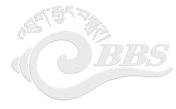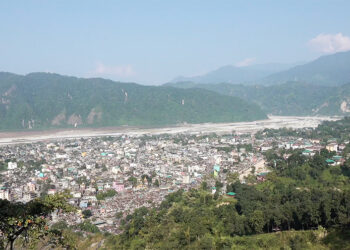
The Great Exploration in Math and Science, GEMS, a hands-on participatory science and math programme developed at the University of California in the United States is now in Bhutan. The programme that motivates students and teachers in learning science and mathematics has been brought to the country by the Athang Learning Institute, a private software development and training academy. The two-day training held in Thimphu ended on Tuesday.
 The programme encourages children to engage in enjoyable activities such as creating chemical reactions in a plastic bag and making glue, toothpaste, cola and ice cream.
The programme encourages children to engage in enjoyable activities such as creating chemical reactions in a plastic bag and making glue, toothpaste, cola and ice cream.
The programme believes that by immersing kids in these hands-on experiences, they can develop a mindset similar to professional scientists.
Widely adopted in schools, kindergartens, nursery schools, and children’s centres across Japan, GEMS is a popular active learning initiative. The programme strives to make learning enjoyable and inquiry-based. For instance, at the training, there was an activity to make glue which gives the liberty to try and experiment different ingredients.
Tshering Choki, the director of the Athang Learning Institute, says as a parent, she feels the education system in the country is more of a teacher-centred classroom. Therefore, as a private institute, she felt the duty of creating a platform where teachers can come and enhance their facilitation skills using GEMS pedagogies.
The program has two pedagogies. Firstly, the ‘Learning Cycle’ leverages the natural learning process of the human brain, inviting children to play with new concepts. Through a concept invitation they independently grasp the theme’s concept and later apply it in real life. The second approach, based on the Multiple Intelligence Theory, acknowledges diverse student abilities, such as musical, linguistic, or visual-spatial intelligence. By tailoring education to these strengths, GEMS inspires independent learning and transforms teachers into continual learners.
“I felt that this was a very wonderful opportunity for teachers as facilitators or educators in the schools. Then this programme, which I found is a great expression in math and science, gives support to teachers, especially in how they can be more creative in the classrooms. Even in the education ministry, we are aligning more towards how they can improve the education system, the facilitation system,” said Tshering Choki, the director of Athang Learning Institute.
“GEMS approaches have really enlightened me to carry out activities, you know, like to make students an independent learner. Till now what I was doing was somewhat different, but now I am more clear and focused about it. I would certainly like to try out these approaches in my school and I would like to talk with my management and administrative team in my school and my proprietor,” said Reetu Rai from Sersang Primary School.
Although the programme is based on science and maths, teachers with diverse backgrounds attended the training in the hope to learn the approaches and collaborate.
“Now the way forward for me as a language teacher is that I can always collaborate in teaching English through other subjects and one thing I have learned is that students would learn the best when they are given an opportunity to explore, inquire and learn as a team. And teaching cannot happen in silos, teaching different subjects if they have collaborated together, for example, cross-pollination. If all the subjects are taught through fun, children would never fail in learning,” said Sonam Choden, a teacher at Jigme Losel Primary School.
Teachers from far-flung areas and some of the remote schools in the country such as Lingzhi and Lunana also attended the training.
Among the teachers is Jas Bdr Rai who has been working at the Royal Botanical Park as a forest ranger for nine years. He hopes to implement the GEMS approach when students come for field trips at the park.
“So we do environmental education or nature education for the students, those who come and visit the park. And this GEMS programme is very interesting and I think we can collaborate with the GEMS and influence more students to learn in the open living classroom. So they can come to the park and they can learn more about the environment and the maths and science in the environment.”
Midori, one of the Japanese facilitators shared that Bhutanese teachers are inquisitive and inspiring.
She considers the training as a reciprocal learning experience and hopes to share how teachers in Bhutan spend time in school which can be very inspiring for Japanese teachers as well.
“I’ve actually been told that they would like to start with small activities, putting it in everyday classrooms. And then I think they will also challenge making it more applicable to the Bhutanese classrooms, which is great. One of the strengths of our programme is that the supplies that have been used are everyday items. You can find it at supermarkets, drug stores, and it’s very safe and inexpensive. But we can always Bhutanise it.”
It trained over 50 interested teachers from 33 schools around the country in two batches. The workshop was co-funded by the Japan International Cooperation Agency, JICA Bhutan under the alumni grant scheme for the Japan Alumni Association of Bhutan.
Devika Pradhan
Edited by Kipchu






